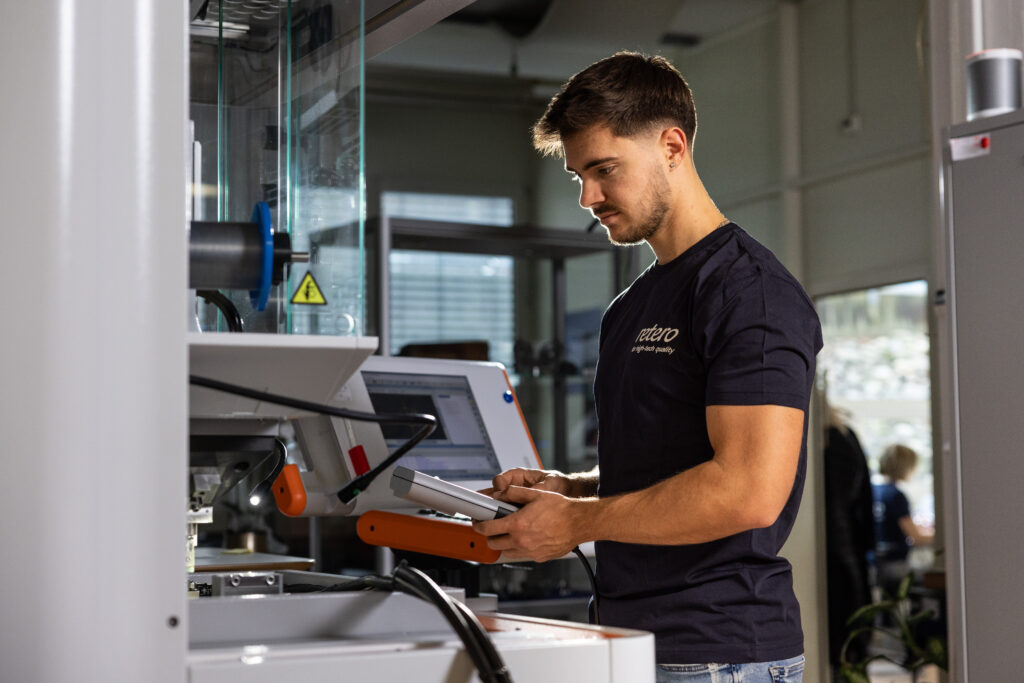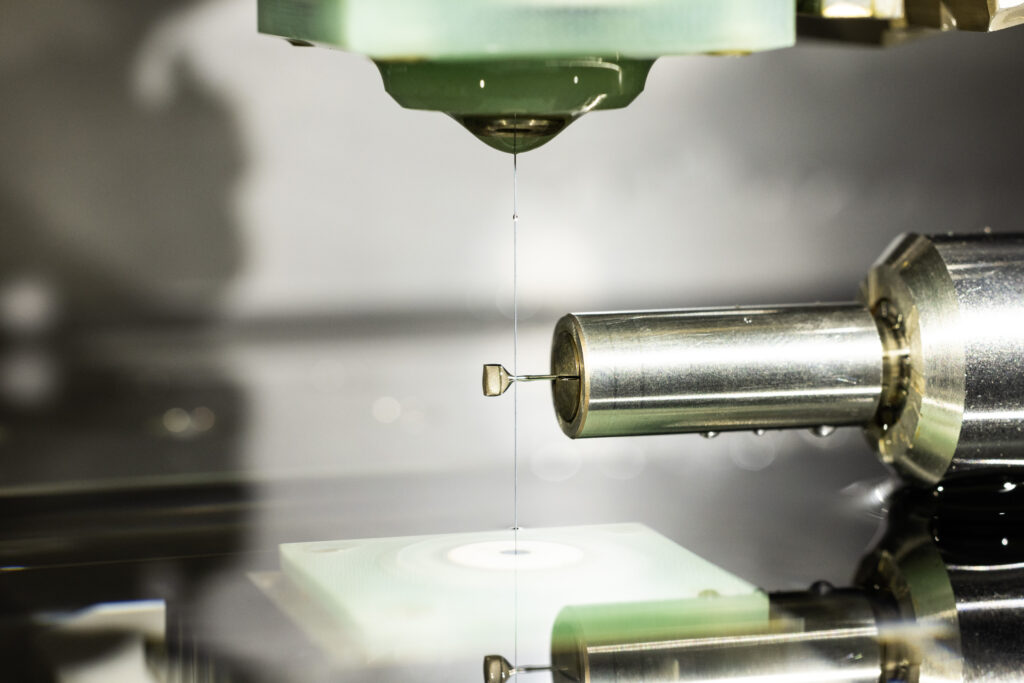EDM Grinding Switzerland

EDM grinding – for perfect surface finishes on rotational components.
Enables deep recesses with the smallest inner radii.
EDM grinding is a high-precision finishing process that perfectly complements our wire EDM capabilities. It allows us to achieve ultra-fine surface finishes and to introduce complex profiles into round parts without contact and without mechanical force, where conventional machining processes reach their limits. For you, this means that your components receive a flawless finish and exceptional profile accuracy, significantly increasing their performance and service life.

We are certified to ISO 9001 and ISO 13485 (medical device certification) by the Swiss Association for Quality and Management Systems.
Advantages of electrical discharge grinding at a glance
Superior surface finishes:
Your benefit: Reduced friction, enhanced appearance and increased functional performance of your components.
Non-contact machining:
Your benefit: No stresses, deformations or burr formation on the component.
Ideal for hard materials:
Your benefit: Extended application possibilities for your most demanding components.
Precise dimensional and profile accuracy:
Your benefit: Precise results that meet the highest tolerance requirements even after surface finishing.

What actually happens during EDM grinding?
EDM grinding is a process for finishing rotational components. It uses electrical discharges that locally vaporize material without any physical contact. In this way, fine grooves and extremely small internal radii can be produced on round parts, entirely without mechanical force being applied.
The core of the process is our rotary axis: it enables the creation of complex profiles precisely where turning or cylindrical grinding reach their limits. Profiles with internal radii down to r = 0.05 mm can be achieved, with profile accuracy in the micrometer range and excellent concentricity. The only requirement for the process is that the workpiece is electrically conductive.
Why Retero?
Your idea deserves the highest precision.
When it comes down to the micrometer, every detail counts. As a family-run company, Retero GmbH is your experienced partner for high-precision micromachining. With over 20 years of specialization, a state-of-the-art machine fleet and Swiss quality, we deliver uncompromising results reliably and personally.
Swiss quality
Retero has been certified to ISO 9001 and ISO 13485 for more than ten years. Two internationally recognized standards that mean measurable safety and trust for our customers.
- ISO 9001 confirms our consistently implemented quality processes in all areas, from production to delivery.
-
ISO 13485 is the gold standard in medical technology and requires:
- complete traceability
- validated processes and suppliers
- strict documentation and uncompromising precision
Our quality assurance goes beyond standards: We embody genuine Swiss precision – driven by responsibility, technical excellence, and a clear commitment to safety.

What our customers say about us
Trustindex überprüft, ob die Originalquelle der Bewertung Google ist. Retero ist DER Partner im Bereich Mikrobearbeitung wie Feindraht- und Drahterodieren. Eine tolle Firma mit Kompetenz. Schweizer Qualität!Gepostet aufTrustindex überprüft, ob die Originalquelle der Bewertung Google ist. Microbearbeitungs Profi mit höchster Präzension. Sehr zu empfehlen!Gepostet aufTrustindex überprüft, ob die Originalquelle der Bewertung Google ist. Retero ist in der Mikrobearbeitung wie Feindraht- und Drahterodieren, Präzisionslaserschneiden sowie im Stanz- und Biegewerkzeugbau ein unschlagbar Partner. Die hohen Erwartungen an die Qualität der Werkstücke wird Retero in allen Belangen gerecht.Gepostet aufTrustindex überprüft, ob die Originalquelle der Bewertung Google ist. Innovative Fertigung und tolle Projekte!
Questions and answers
Short answer: EDM grinding is a precision manufacturing process that removes materials by electrical discharge to create complex shapes and surfaces. Spark erosion grinding is a high-precision manufacturing process that is widely used in the metalworking industry. It is based on the principle of electro-erosive machining, in which material is removed from a workpiece by a series of electrical discharges, also known as spark discharges. These sparks occur between an electrode and the workpiece and generate high thermal energy at the point of contact, which melts and vaporizes the material. The result is a precise and fine removal of the material to create complex shapes, fine contours and high-quality surfaces.
Short answer: In spark erosion grinding, an electrode tool is brought close to the workpiece and electrical sparks are created between the electrode and the workpiece, which remove material particles. The process of spark erosion grinding begins by positioning an electrode tool a short distance from the workpiece, usually using a CNC-controlled machine. By applying an electrical voltage between the electrode and the workpiece, spark discharges are created that are very short but extremely intense. These sparks move in a controlled manner between the electrode and the workpiece, causing micro-explosions on the material. The high thermal energy generated during this process causes the material to be ablated and dissolved particles to be removed from the machining area. The continuous control and movement of the electrode enables precise removal of the material and shaping of the workpiece to the desired specifications.
Short answer: The process is suitable for a wide range of conductive materials such as metals, hard metals, ceramics and composites. Spark erosion grinding is particularly effective when processing conductive materials. These include metals such as steel, aluminum, copper and brass, but also harder materials such as hard metals and ceramic materials. Even composites that have a combination of different materials can be successfully processed using this method. The wide range of materials that can be processed makes spark erosion grinding an extremely versatile and valuable production technique.
Short answer: EDM grinding enables precise machining of even very hard materials, complex contours and thin components without having to rely on traditional cutting tools. Spark erosion grinding offers a number of advantages compared to conventional machining methods. Firstly, it enables the machining of very hard materials that are often too resistant for conventional cutting tools. This results in high-quality surfaces and precise contours that are difficult to achieve with other methods. In addition, the contactless processing of the workpiece allows for low mechanical stress and minimizes the risk of damage or deformation of the material. The process is also capable of producing complex shapes and intricate structures with a high degree of accuracy, making it ideal for the production of sophisticated parts, tools and precision components.
Short answer: The process is used in the manufacture of tools, molds, precision components, micro components, medical implants and other high-quality products that require high accuracy. Spark erosion grinding is widely used in various branches of industry. In the tool and mold making industry, the technique is often used to produce high-quality cutting tools, injection molds, stamping dies and embossing tools. Medical technology uses the process to produce complex and precise medical implants, while the electronics industry uses electrical discharge grinding to manufacture micro components such as microelectrodes or fine conductor tracks. Other applications include the manufacture of prototypes, the production of jewelry and the machining of turbine blades in the aviation industry. Thanks to the high precision and versatility of the process, spark erosion grinding is a valued technology in many branches of industry.




